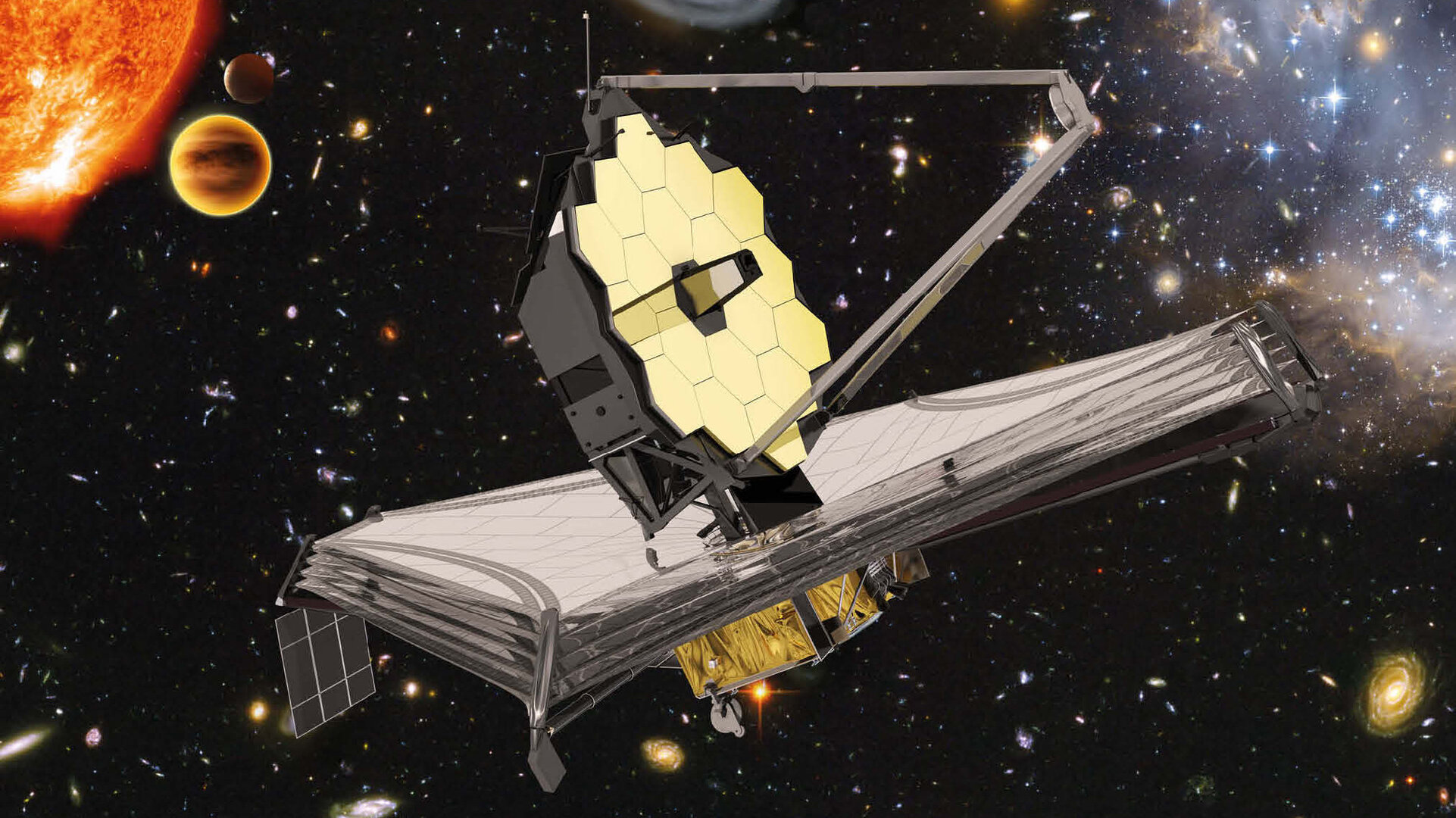Deployable and deformable: ESA enters a new age of space mirrors for better imaging
Cast your mind back to times when carnivals and funfairs were still open. Alongside the rollercoasters, games and popcorn stands you find curved mirrors that distort your reflection in funny ways. Similarly, if the mirrors that we send into space become even slightly bent or misaligned, they distort the images of objects we want to investigate.

When it comes to studying distant astronomical objects and peering at Earth's surface in high resolution, size matters. Bigger mirrors can capture more light, but the larger they get, the trickier it becomes to maintain a perfect shape. Especially when that mirror is made of multiple segments that fold out once the spacecraft reaches its destination. A team of researchers supported by ESA Discovery & Preparation recently looked into how large 'deployable mirrors' could be actively corrected in space to maintain their perfect shape.
"When we launch large systems made up of one or several segments, the mirror can deform for various different reasons," explains ESA Engineer Pascal Hallibert who oversaw the study. "These include being released from Earth's gravitational pull, experiencing intense changes in temperature and being subject to strong vibration during launch."

"In the past, we were happy with the resolution we are able to achieve with imperfect mirrors, but space research and its applications are getting much more ambitious. To look at the Universe and Earth’s surface in more detail, we need to adjust the mirrors using active optics."
An active optics system involves monitoring the light reflected from the mirror into the telescope's optical system and adjusting the mirrors' shape to correct for any distortions that might be present in the reflected light. This is achieved, for instance, using tiny motors underneath the mirror or by generating an electric charge within the mirror material.
"ESA began R&D into deformable mirrors about ten years ago, and more recently the Agency has been looking into the full correction loop including the system that senses aberrations in incoming light," continues Pascal. "The real added value of this study was to look at active correction specifically for deployable mirrors."

Led by Thales Alenia Space, the study aimed to identify the technical challenges associated with active optics for deployable space mirrors, design an active correction loop, and define a technological roadmap towards developing such a loop.
In particular, the team looked at active optics for a space telescope to image and characterise Earth-sized exoplanets and an Earth observation satellite to look at Earth's surface in high resolution from geostationary orbit.
"To look for Earth-sized exoplanets, we need a resolution two to three orders of magnitude higher than we can achieve now. This requires bigger, deployable mirrors. For Earth observation, we need ultra-stable mirrors for applications like security and disaster management that require high resolution images of Earth's surface," explains Pascal.

Active optics has been used in ground-based astronomy for three decades, with the European Southern Observatory (ESO) building the first ever telescope to have a computer-controlled main mirror. ESA is collaborating closely with ESO on active optics, with the aim of exchanging information and advice.

"Some of the technology already developed for ground-based astronomy can be reused or built upon for space applications," explains Pascal. "But on the ground, active optics mainly corrects for gravitationally induced deformations, whilst in space we need to focus more on gravity and moisture release, manufacturing and alignment errors, temperature variations and launch effects."
The study highlighted that more work is needed to strengthen the efficiency of active correction loops working as a single system. Furthermore, although ESA has worked a lot on deformable main mirrors in recent years, most high-contrast imaging instruments will need additional deformable mirrors inside them with a very high number of actuators, complementing those already space-qualified; these require specific further development. Because missions requiring active optics are ambitious, expensive, and something we can expect to see in the longer-term future, a next step would also be testing active optics in a 'demo mission'.

"The technologies identified in this study are really going to enable future large deployable missions," concludes Pascal. "It's an original European approach to deployment and correction of image quality and stability in deployable optics."















 Germany
Germany
 Austria
Austria
 Belgium
Belgium
 Denmark
Denmark
 Spain
Spain
 Estonia
Estonia
 Finland
Finland
 France
France
 Greece
Greece
 Hungary
Hungary
 Ireland
Ireland
 Italy
Italy
 Luxembourg
Luxembourg
 Norway
Norway
 The Netherlands
The Netherlands
 Poland
Poland
 Portugal
Portugal
 Czechia
Czechia
 Romania
Romania
 United Kingdom
United Kingdom
 Slovenia
Slovenia
 Sweden
Sweden
 Switzerland
Switzerland


























